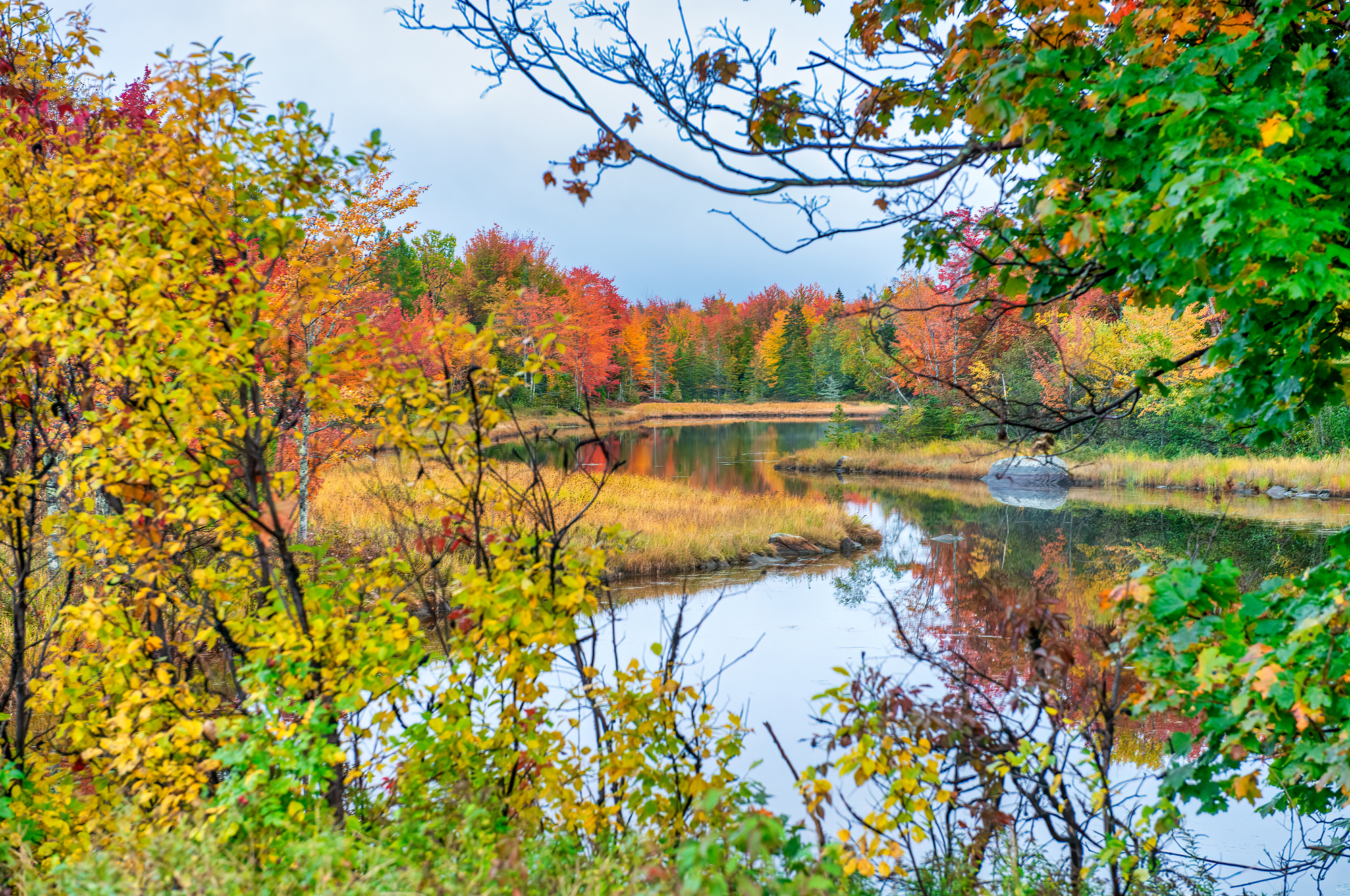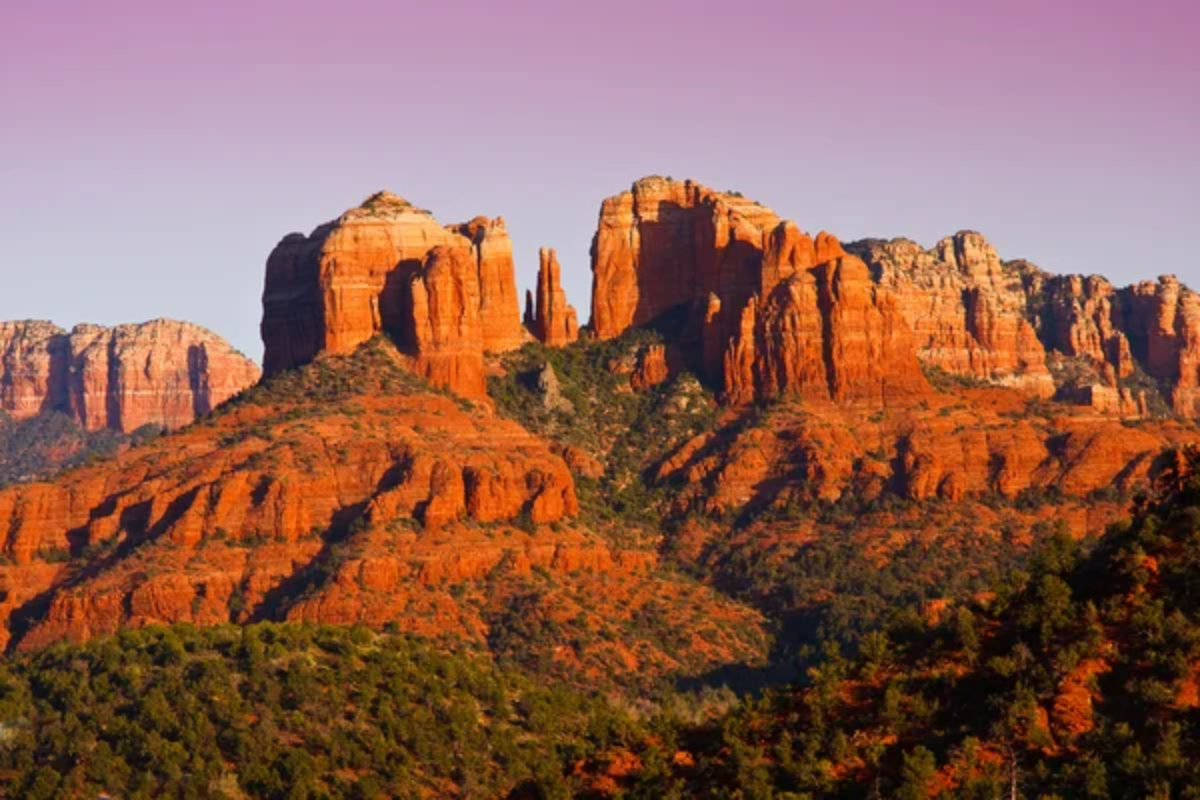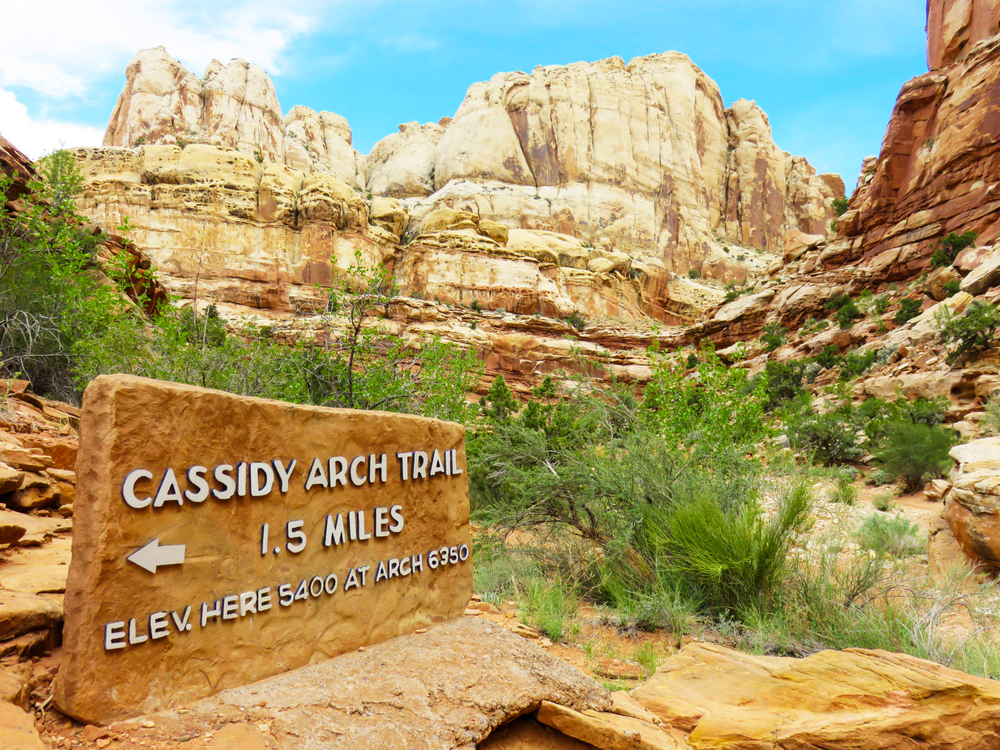The magic of a truly dark sky—where the Milky Way casts shadows and thousands of stars overwhelm the visual field—remains one of nature’s most profound experiences. While pristine night skies typically require journeys to remote locations, certain special places across America combine exceptional darkness with reasonable proximity to towns and cities.
These astronomical sweet spots allow visitors to enjoy comfortable amenities while experiencing celestial views typically reserved for wilderness expeditions. The growing recognition of light pollution’s environmental impacts has inspired communities to protect and celebrate their dark skies, creating destinations where convenience and cosmic wonder coexist.
Here is a list of 15 places across the United States where remarkable stargazing opportunities exist surprisingly close to civilization.
Flagstaff, Arizona

As the world’s first International Dark Sky City, Flagstaff demonstrates how thoughtful lighting ordinances can preserve astronomical visibility even in a community of 75,000 residents. The city’s pioneering light pollution controls date back to 1958 when concerned citizens acted to protect Lowell Observatory’s research capabilities from growing urban glow. Today, specialized amber LED streetlights with fully shielded fixtures minimize sky impact while maintaining safety, allowing the Milky Way to remain visible from certain city parks and nearby overlooks.
Buffalo Park offers excellent stargazing just minutes from downtown hotels, while Lowell Observatory welcomes visitors for evening programs combining telescope viewing with expert guidance. The observatory’s 24-inch Clark refractor telescope—used to discover Pluto in 1930—remains available for public viewing on select nights.
Borrego Springs, California

This small desert community embraced its International Dark Sky Community designation by transforming night sky preservation into a cornerstone of local identity and tourism. Located within a geographic basin surrounded by mountains that block light from larger cities, Borrego Springs offers exceptional stargazing within walking distance of motels and restaurants. The town center features specially designed pedestrian lighting that maintains visibility while preserving night sky views, allowing casual evening strolls to become impromptu astronomical excursions.
Anza-Borrego Desert State Park surrounds the community, creating vast protected spaces where ranger-led night programs introduce visitors to celestial features visible without optical aids. The desert’s clear air and low humidity enhance astronomical visibility, allowing even casual observers to distinguish features like Jupiter’s moons using basic binoculars.
Like Travel Pug’s content? Follow us on MSN.
Moab, Utah

This adventure sports hub serves as a surprisingly convenient base for exceptional stargazing, with world-class dark skies beginning just minutes outside town. Dead Horse Point State Park—just 32 miles from downtown restaurants and accommodations—holds International Dark Sky Park status with ranger-led astronomy programs throughout the summer months. The elevated position overlooking the Colorado River offers a dramatic foreground for astrophotography, with sandstone formations silhouetted against star-filled skies.
Canyonlands National Park’s Island in the Sky district provides another nearby option where parking areas double as perfect observation platforms after sunset. The combination of dark skies and dramatic red rock landscape creates distinctive stargazing experiences unavailable in traditional astronomical settings, with excellent visibility beginning almost immediately after sunset due to the region’s clean, dry air.
Rapid City, South Dakota

This regional hub provides unexpected access to remarkable dark skies despite its status as western South Dakota’s largest city. Just 25 miles south, Badlands National Park maintains some of America’s darkest accessible skies, with minimal development between the park and the empty plains stretching eastward. The park’s summer night sky program at Cedar Pass Campground includes telescope viewing and constellation tours, with rangers pointing out celestial features using laser pointers that seem to touch the stars themselves.
Closer to town, Skyline Wilderness Area offers decent viewing just minutes from downtown hotels, with Rapid City’s location in the Black Hills creating natural shielding from its own moderate light pollution. The region’s low humidity and elevation, starting at 3,200 feet, create atmospheric clarity, enhancing visibility even for casual observers.
Bar Harbor, Maine

This popular coastal town on Mount Desert Island serves as a gateway to both Acadia National Park and exceptional stargazing opportunities just minutes from comfortable accommodations. The park’s Cadillac Mountain—the highest Atlantic coastal point north of Brazil—provides an elevated platform where stargazers look out over the open ocean with minimal light pollution to the east.
The park hosts popular Night Sky events throughout summer, including the Acadia Night Sky Festival each September, when telescopes dot the landscape and experts share their knowledge with visitors. Even during peak tourist season, short drives to the island’s western side reveal dramatically darker conditions where the Milky Way reflects in quiet harbors and ponds. The coastal location provides opportunities to observe celestial objects seemingly rising directly from the Atlantic Ocean during certain seasons.
Like Travel Pug’s content? Follow us on MSN.
Sedona, Arizona

This renowned red rock destination has actively embraced night sky tourism as complementary to its famous landscape, with numerous local businesses supporting evening astronomical experiences. The community’s Dark Sky Committee worked to achieve International Dark Sky Community status through retrofit lighting programs and public education about appropriate outdoor illumination.
Keep Sedona Beautiful organization hosts regular night sky talks and stargazing sessions at locations including Airport Mesa, where elevated positions enhance visibility while remaining just minutes from town amenities.
Local resorts increasingly offer astronomy packages featuring telescope setups on private patios, while specialized tour operators provide guided night experiences combining cultural history with celestial observation. The distinctive red rock formations create compelling foreground elements for astrophotography, with balanced rock formations silhouetted against star-filled skies.
Kanab, Utah

This small town positioned near multiple national parks offers exceptional accessibility to pristine night skies without requiring wilderness expertise. The nearby Kaibab Plateau provides elevated observation points where airglow and zodiacal light—subtle atmospheric phenomena visible only in extremely dark conditions—appear regularly throughout clear nights.
Grand Staircase-Escalante National Monument begins just outside town, offering numerous pullouts where visitors can simply park and look upward to experience genuine dark sky conditions.
The town serves as a hub for astronomy-focused tour operators who transport visitors to optimal viewing locations based on current conditions while providing optical equipment and expert guidance. The region’s combination of high desert climate and minimal development creates reliably clear viewing conditions where even subtle celestial features appear dramatically visible to the unaided eye.
Westcliffe, Colorado

This ranching community in the Wet Mountain Valley achieved International Dark Sky Community designation through remarkable grassroots efforts to preserve its natural nighttime environment. The town and neighboring Silver Cliff retrofitted all municipal lighting with fully shielded fixtures that direct light downward while minimizing blue light emissions known to increase skyglow. The Sangre de Cristo Mountains, rising over 6,000 feet above the valley floor, block light pollution from Colorado’s Front Range cities, creating a dark sky island in relatively accessible terrain.
The community-built Smokey Jack Observatory hosts regular public viewing sessions where visitors use research-grade telescopes while remaining just blocks from local restaurants and accommodations. The valley’s 7,800-foot elevation places observers above denser atmospheric layers, enhancing clarity and detail in celestial objects.
Like Travel Pug’s content? Follow us on MSN.
Goldendale, Washington

This small community in south-central Washington hosts one of America’s most accessible major observatories combined with naturally dark surroundings. Goldendale Observatory State Park features a 24.5-inch telescope in a recently renovated facility offering guided viewing sessions throughout the year—one of the largest public telescopes permanently available for regular viewing in the nation. The observatory’s 2,100-foot elevation and positioning north of the Simcoe Mountains creates surprisingly dark conditions despite relative proximity to Portland and Seattle.
The facility’s interpretive center includes interactive exhibits explaining astronomical concepts, while evening programs combine constellation tours with detailed telescope observations of planets, nebulae, and distant galaxies. The surrounding Columbia River Gorge region offers numerous additional viewing locations, including the Stonehenge Memorial, where a full-scale concrete replica provides a unique foreground for astrophotography.
Springdale, Utah

This gateway community to Zion National Park complements daytime canyon views with remarkable night sky access beginning immediately outside town. The Virgin River Recreation Trail provides a convenient stargazing platform walkable from most accommodations, where strategic bends in the canyon dramatically reduce light trespass from the town’s modest commercial district.
The park itself hosts regular astronomy programs at locations including the Human History Museum plaza, where rangers lead constellation tours before offering telescope viewing of deep sky objects. Local outfitters provide specialized night photography workshops teaching techniques for capturing the park’s famous rock formations beneath star-filled skies. The town’s commitment to dark sky preservation includes a lighting ordinance requiring shielded fixtures and warm-colored bulbs throughout the community.
Torrey, Utah

This tiny town adjacent to Capitol Reef National Park combines International Dark Sky Park access with charming lodging and dining options supporting multi-day astronomical exploration. The town serves as headquarters for the Heritage Stargazing program connecting visitors with optimal viewing locations while providing cultural and geological context through expert interpretation. Capitol Reef National Park offers organized night sky programs at the Fruita Campground, where rangers use green laser pointers to identify celestial features against remarkably dark backgrounds.
The park’s remote location creates some of America’s darkest accessible skies, with natural features including Navajo sandstone domes and slot canyons providing distinctive foreground elements for astrophotography. The community’s modest size prevents significant light pollution, while its elevation at 6,800 feet places observers above atmospheric moisture that might otherwise diminish visibility.
Like Travel Pug’s content? Follow us on MSN.
Mackinac Island, Michigan

This car-free island in Lake Huron creates a unique stargazing environment where reduced vehicle traffic eliminates moving headlights that typically disrupt night vision adaptation. The island’s Headlands International Dark Sky Park lies just across the Straits of Mackinac on the mainland, accessible via a short ferry ride before sunset. Designated viewing areas along the less-developed western shoreline provide excellent observation locations within walking distance of Victorian hotels and restaurants in the main village.
The surrounding Great Lakes waters create natural buffering from distant light pollution, allowing clear views of astronomical features, including the aurora borealis during active solar periods. The island’s traditional character—with limited street lighting and pedestrian-focused infrastructure—naturally supports darker night environments than typically found in tourism destinations.
Ketchum/Sun Valley, Idaho

This renowned mountain resort community has embraced dark sky preservation as a natural extension of its environmental values and tourism appeal. The town worked with the International Dark-Sky Association to become America’s first International Dark Sky Reserve, implementing comprehensive lighting standards that maintain mountain valley views of the night sky.
The area hosts the annual Dark Sky Festival each October, bringing together astronomers, photographers, and curious visitors for educational programs and viewing sessions. Numerous accessible viewing locations include trailheads just minutes from luxury accommodations, where short walks lead to observation points with minimal light interference. The combination of 6,000-foot elevation, low humidity, and controlled lighting creates exceptional viewing conditions without requiring significant travel from comfortable lodging and dining options.
Julian, California

This historic mining town in the mountains east of San Diego maintains remarkably dark skies despite lying just 60 miles from a major metropolitan area. The community’s elevation at 4,200 feet places it above much coastal marine layer influence, while the surrounding Cleveland National Forest creates natural buffering from urban light domes. The town actively promotes astronomy tourism through events, including the Julian StarFest, where vendors and experts gather annually to share knowledge and equipment.
Observers frequently report seeing Milky Way structures, satellites, and meteors from viewing locations just outside town, including the nearby Volcan Mountain Wilderness Preserve. Local apple orchards and wineries have begun hosting stargazing events, combining night sky observation with regional culinary experiences, creating distinctive agritourism opportunities unique to the area.
Like Travel Pug’s content? Follow us on MSN.
Leavenworth, Washington

This Bavarian-themed town in the eastern Cascades combines European village charm with surprisingly accessible dark sky viewing. The surrounding mountainous terrain naturally shields the valley from distant light pollution, while the community has implemented thoughtful outdoor lighting that maintains its distinctive character while minimizing upward light spill. Just minutes from downtown accommodations, pullouts along Icicle Creek Road provide excellent observation platforms where steep canyon walls frame views of the Milky Way above.
During winter months, the community’s exceptional snow conditions create opportunities for guided snowshoe astronomy tours where participants travel through silent forests before reaching meadow viewing locations. The combination of mountain terrain, community lighting awareness, and developed tourism infrastructure makes Leavenworth particularly accessible for travelers seeking dark-sky experiences without wilderness camping requirements.
Celestial Proximity

These destinations demonstrate how thoughtful community planning, geographic advantage, and growing appreciation for natural darkness create places where remarkable astronomical experiences coexist with comfortable amenities. The increasing recognition of dark skies as valuable natural resources—for scientific research, wildlife health, human wellbeing, and tourism development—inspires continued protection efforts making these experiences increasingly accessible.
For travelers seeking a connection with the cosmos without expedition-level commitment, these locations offer the perfect balance between convenience and celestial wonder. The night sky visible from these special places provides a perspective that has informed human understanding since ancient times—a shared heritage increasingly recognized as worthy of protection for future generations.
More from Travel Pug

- Cities Growing so Fast You Won’t Recognize Them in 10 Years
- 13 Destinations Where Tourists Regularly Regret Their Trip
- 16 U.S. Cities That Are Quietly Becoming Travel Hotspots
- Where to Travel If You Love Long Bus Rides and Daydreams
- 20 Cities Perfect for Solo Travelers Who Crave Adventure & Culture
Like Travel Pug’s content? Follow us on MSN.
